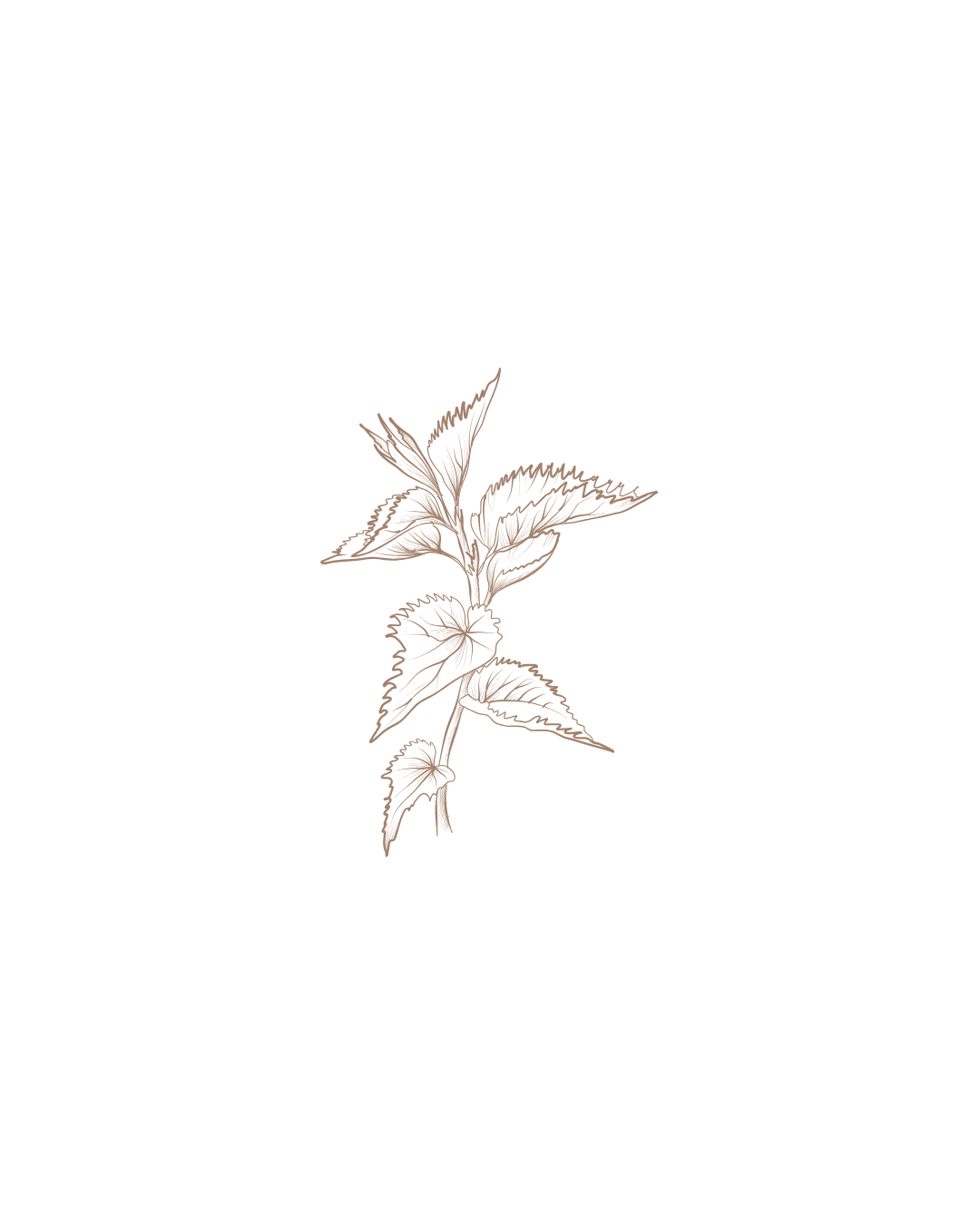exploring the fibers
materials and ethics
I work with sustainable fibers — always.
The materials I choose are as important to me as the designs themselves. I use only biodegradable, natural fabrics that align with the values at the heart of my work. These include nettle, linen, organic cotton, hemp, peace silk, mulberry silk, silk velvet, and raw silk — fibers that not only take on plant dyes beautifully but also return gently to the earth at the end of their life.
I choose these materials for their natural beauty. They have life in them — texture, breath, and subtle variation. I spend a lot of time sourcing my fabrics.
The integrity of the fiber is non-negotiable in my process.
rooted in nature:
the fibers i choose
Every fiber I use carries a story — of the land, of tradition, and of the kind of future I want to see in the world. I’m drawn to materials that are not only biodegradable and breathable but that are grown and processed in ways that support soil health, water conservation, and slow, intentional craftsmanship.
These fibers are alive in their own way. They hold a vibration that you can actually feel on the skin — grounding and calming. They don’t suffocate you; they breathe with you.
They age with you.
They belong to a long lineage of cloth that has clothed and comforted human beings for thousands of years.
hemp
Hemp is one of my favorite fabrics to work with — for both practical and environmental reasons. Hemp grows quickly, needs very little water, and doesn’t require chemical pesticides or fertilizers. It actually helps improve the soil it grows in. Hemp clothing is strong and lasts for many years and will soften over time.
Hemp is biodegradable, it breaks down naturally in the earth and leaves nothing harmful behind. It takes natural dyes beautifully soaking up all the color. Leftover hemp fabric also makes great weed barrier in the dye garden!
linen
Linen feels crisp at first, but softens with each wear and wash, slowly taking shape of your body. It keeps you cool in the heat and warm in the cold — it knows how to adapt. Linen has a high vibration at a frequency of 5,000 Hz, which makes it healthy for our bodies.
Made from flax, one of the oldest cultivated plants, linen connects us to a deep ancestral memory of cloth. It’s been used for thousands of years across the world — worn by mystics, farmers, and everyday people. When I go out to work in the gardens I wear linen. When I go out to dinner, I wear linen. It’s so easy, airy and beautiful, I wear it for all occasions!
organic cotton
Organic cotton is grown without pesticides or synthetic fertilizers, it retains a kind of purity that conventional cotton just doesn’t have. It is hypoallergenic and gentle for folks with sensitive skin. I usually only buy organic cotton in a blend with hemp for clothing with stretch.
Cotton has long been a staple of traditional textiles around the world, from India to Peru to the American South.
nettle
Nettle has a quiet strength. It’s a little coarse at first, but softens with time. There’s something wild and unrefined about it that I love. Most of the woven jewelry that I have designed is from nettle that I dye. Nettle has been used for thousands of years as a textile, especially in places where flax and cotton didn’t thrive.
I grow nettle in the garden for so many things including tea that I brew all year as well as a beautiful light green dye, especially if harvested in late April.
peace silk
Wearing peace silk is like being wrapped in moonlight. It’s incredibly soft, but with a natural texture that reminds you this came from a living being. Because the silkworms aren’t harmed in the process, the energy of the fiber feels gentle. There’s an integrity to it that’s hard to describe, but you feel it when it’s on your skin. It is my favorite fabric to make eco printed wraps and shawls.
Peace Silk has a long, sacred history across Asia, used in ceremonial garments and traditional dress.
Silk velvet is pure sensuality. It’s plush, fluid, and catches the light in this liquid way. When it touches your body, it almost feels like water. And yet, because it’s made from real silk, it breathes — it doesn’t trap you. I use it when I want to honor softness, richness, beauty.
Historically, velvet has been associated with nobility and ceremony, but in this form, it feels more like earthbound luxury — something you can wear with bare feet and still feel regal.
silk velvet
Raw silk is alive with texture. It has this slightly rough, nubby surface that speaks to its less-processed nature — it still carries the gum from the cocoon, and that gives it a unique hand feel. When you wear it, it feels like skin meeting skin.
Raw silk has been part of traditional weaving and dyeing cultures for centuries, especially in India and China, where texture and imperfection are celebrated. It holds dye in a beautifully unpredictable way, which makes every piece feel deeply personal.








